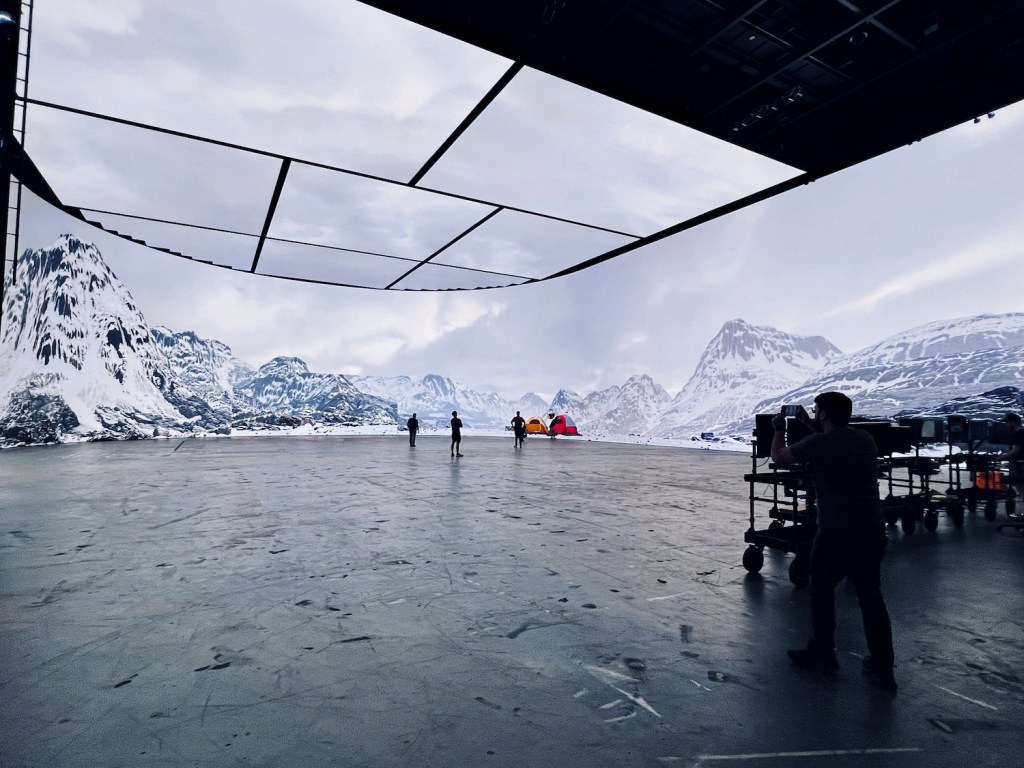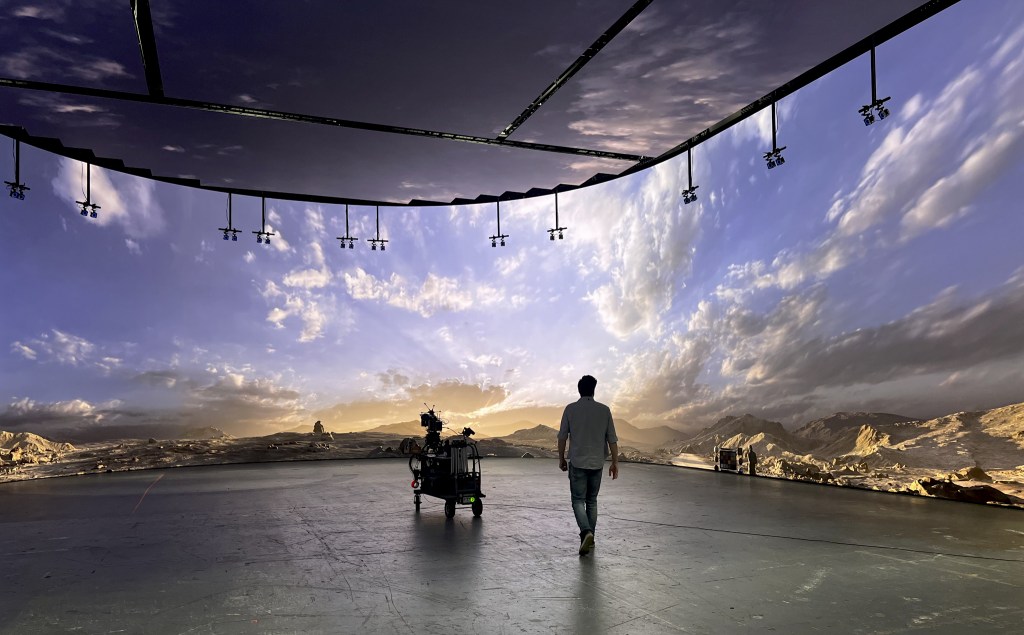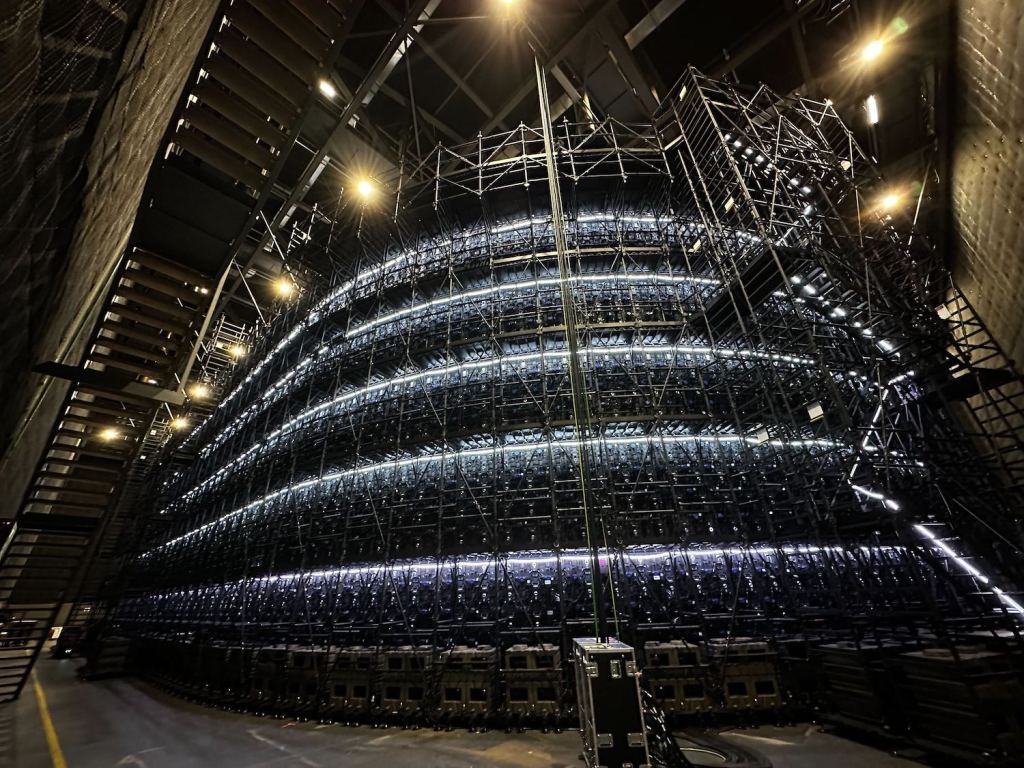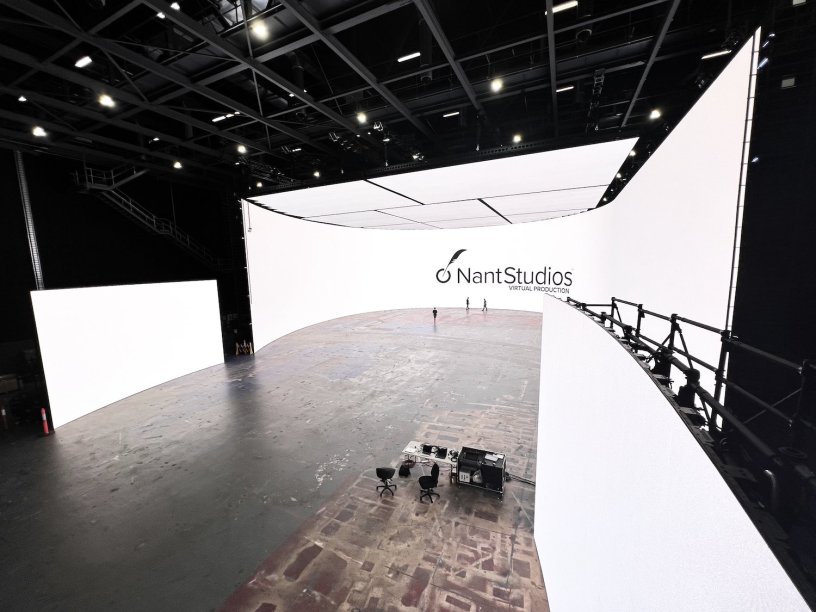LA-based virtual production house NantStudios has built what is believed to be the largest permanent LED volume in the world at Docklands Studios Melbourne.
The construction of virtual production stages at Docklands was first flagged alongside the announcement last April that AppleTV+ series Metropolis will shoot in Victoria, with investment from both federal and state governments.
The Nantstudios build consists of two volumes. The first is designed for large scale film and television projects, with a 12.19 metre (40-foot) high radiused wall of 6,000 panels, running 88.1 metres. It is located in Docklands’ 2,323 square metre Stage 1, which also has a 12 x 28 x 3 metre water tank. Two moving LED wall sections at 6 x 9.95 metres are also available.
The facility is capable of accommodating a large immersive set as well as multiple sets simultaneously using modular wall sections which serve as wrap-around LED partitions.
The volume also has a “J” shape designed for sweeping shots, or for a long “walk-and-talk” of up to 38 metres before talent needs to begin turning the radius of the wall. Art departments also then have the flexibility to decide whether building into a curve or a straight wall is more creatively desirable.
The second LED stage, in Stage 3, is more suitable for small to medium-sized set pieces and moving vehicle scenes, with the wall standing at 7.9 metres (26 feet) high, 17 metres wide and 21 metres long. It also offers moving wall sections at 4 x 6 metres.
Both stages have fully articulating ceiling architecture that can be manipulated via 3D software. Each “ceiling pod” can swivel up to 30 degrees, allowing a production to push light into any corner of the stage.
Metropolis is produced by UCP, a division of Universal Studios Group, with Matchbox Pictures providing production services. The two companies selected Nantstudios as their vendor for their upcoming pipeline of projects in Victoria. However, the stages are not exclusive to the companies and will be available to other local and international productions going forward.
The Victorian government provided $12.5 million towards the build. In addition, the Federal Government has put an additional $5 million forward to support students with training as part of a national upskilling program, in partnership with the Victorian College of the Arts (VCA), Universal and Matchbox.
Matchbox has utilised virtual production on a number of projects now, starting with ABC’s Fires, and then on both seasons of Universal Studio Group project La Brea.
Chief operating officer Matt Vitins observes to IF that many LED volumes around the world are built and then dismantled for each production. By building a more permanent, large-scale structure it saw opportunity – supported by VicScreen – to not only service its own pipeline but develop the industry.
“It gives us a competitive advantage in Victoria and Australia in attracting projects that depend on that technology, or that are looking to use that technology. The other thing is the stability of production volume going through the volumes, and the standing infrastructure, is something around which you can can start build a workforce and an expertise. Those are selling points for the industry as well.”
Further Vitins believes LED virtual production technology offers creatives previously impossible efficiencies, and even gives productions potential to reduce their environmental footprint.
The build is a significant coup for Docklands, which only recently opened a new $46 million, 3,700 square metre sound stage, in Stage 6, increasing its capacity by 60 per cent.

Nantstudios was founded by Michele B. Chan Soon-Shiong, who serves as its president, in 2012. It has a secure layer 1 fibre network, with a family of issued patents covering cloud hybrid fabric, machine vision and computing technologies. Part of the Nantwork system of companies, it also offers services such as digital asset creation, AI machine learning motion control, consulting, performance capture and on-set operations.
Nantstudios VP of operations and business development Keaton Heinrichs tells IF the company had been looking to expand out of LA for some time given the market there was primarily busy with commercial and mid-tier TV episodic productions. In Melbourne it saw the chance to build a virtual production hub within the Southern Hemisphere.
“Sadly, LA is not seeing the number of medium and blockbuster-level projects upon which its identity has been so closely aligned. The entertainment business is chasing vastly more generous financial incentives available in other production centres around the world. In Australia – and particularly in Victoria – there is an understanding and justification of the net financial gain when it comes to providing attractive incentives to film and TV productions,” he said.
“Our goal from the outset, has been to bring this technology and workflow to all scale of projects, so finding a well-supported area with attractive tax incentives to major studios was essential.
“We have been keeping a close eye on Docklands Studios Melbourne for over two years now, and when we learned about their involvement along with other esteemed companies and anticipated projects, we knew this region was where we wanted to invest.”

In terms of the scale of the volume, Heinrichs said together the two stages provide a broad range of services for productions of all sizes.
“There’s no definitive answer when it comes to the correct volume size; it all depends on the scope of the project you have in mind.
“That being said, at the heart of our philosophy is the conviction that technology must always serve as a tool for creativity. This guiding principle informed our approach during the design and engineering phase of this project. We recognised that current generation LED volumes are static and can limit the creative vision of art departments, who often times, must mould their set pieces to fit within the confines of a small wall.
“We wanted to tackle this problem and the notion of quickly “wrapping” a set in LED screens was an appealing solution. We didn’t set out to create the world’s largest LED volume. The volumes you see today are the result of an organic process that began with our extensive experience operating volumes for over two years, as well as discussions with well-known directors, DPs, production designers, and gaffers who had worked with LED volumes.”

One of the common concerns during Nantstudios’ consultation was the challenge of capturing wide-shots or tilt-ups in an LED volume without revealing the “gap” between the main LED wall and the LED ceiling.
To address this issue, it conducted VR scouting sessions and discovered that by raising the wall to 12 metres it could comfortably accommodate wide-shots with a 35mm lens from nearly anywhere inside the volume without revealing the ceiling.
“Naturally, raising the wall to such a height presented engineering obstacles, and we quickly realised that off-the-shelf rigging hardware wouldn’t suffice,”
“But rather than abandoning the idea, we decided to fully commit to it and developed a completely custom-engineered rigging solution that not only addressed this challenge, but also solved other issues for DP’s and gaffers.
“Our innovative rigging design allows for practical lighting to be implemented nearly anywhere along the main wall, and our internal teams can troubleshoot any of the 6000 LED tiles in a matter of seconds. These enhancements have significantly reduced potential downtimes during production by providing unparalleled access to the structure.”
Metropolis was lured to Australia via the Location Incentive, with the Federal Government providing $83.8 million funding to attract it and a further pipeline of Universal Studio Group. The Victorian Screen Incentive also contributed $41.6 million to the project.
The series is created by Sam Esmail (Mr Robot, Homecoming, Gaslit) and is based on Fritz Lang’s 1927 cult sci-fi film, which was set in a dystopian future city marked by sharp divide between the working class and the wealthy elite. Cast confirmed so far are Briana Middleton and Lindy Booth. UCP produces with Esmail Group.



